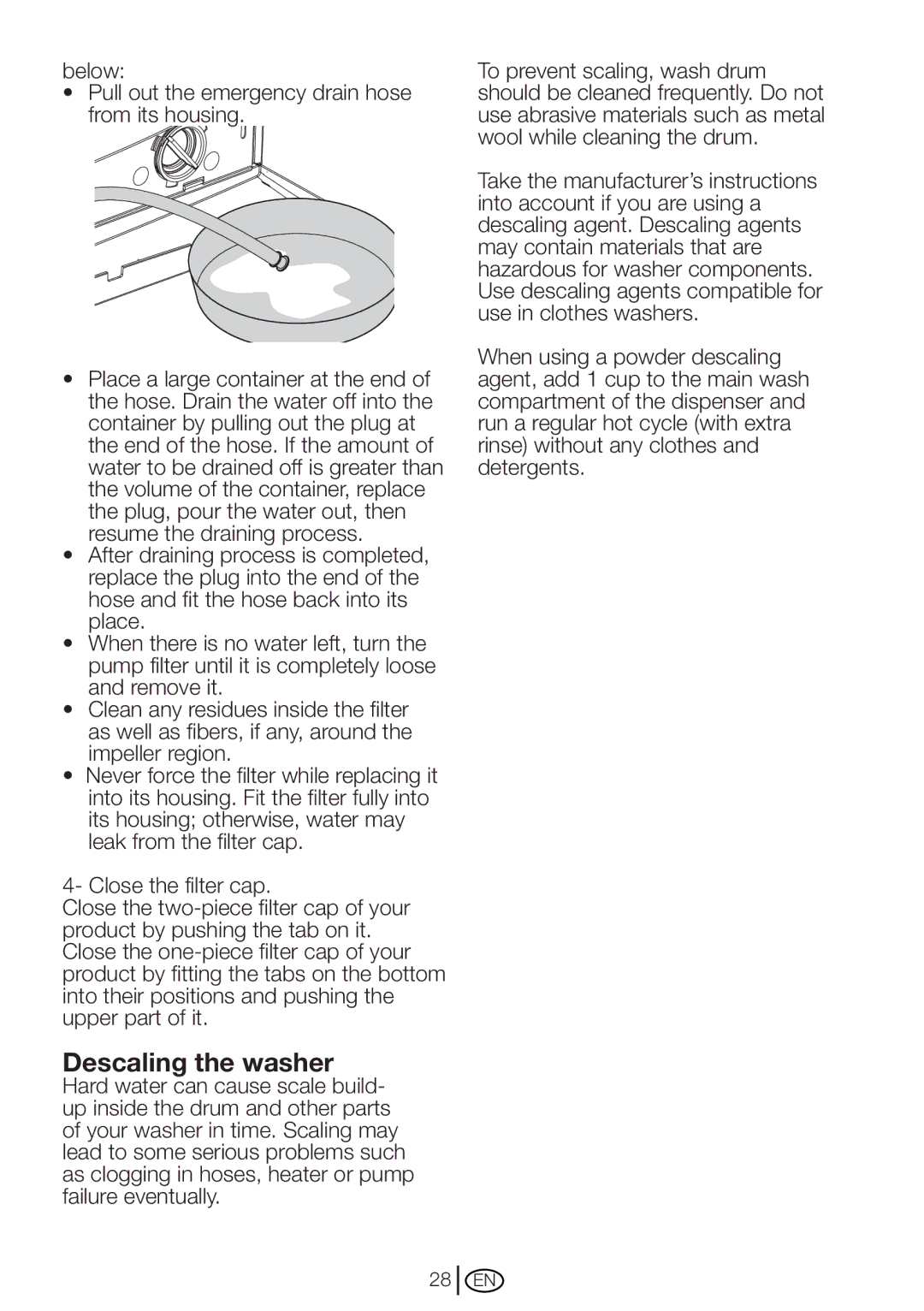
below:
•Pull out the emergency drain hose from its housing.
•Place a large container at the end of the hose. Drain the water off into the container by pulling out the plug at the end of the hose. If the amount of water to be drained off is greater than the volume of the container, replace the plug, pour the water out, then resume the draining process.
•After draining process is completed, replace the plug into the end of the hose and fit the hose back into its place.
•When there is no water left, turn the pump filter until it is completely loose and remove it.
•Clean any residues inside the filter as well as fibers, if any, around the impeller region.
•Never force the filter while replacing it into its housing. Fit the filter fully into its housing; otherwise, water may leak from the filter cap.
4- Close the filter cap.
Close the
Descaling the washer
Hard water can cause scale build- up inside the drum and other parts of your washer in time. Scaling may lead to some serious problems such as clogging in hoses, heater or pump failure eventually.
To prevent scaling, wash drum should be cleaned frequently. Do not use abrasive materials such as metal wool while cleaning the drum.
Take the manufacturer’s instructions into account if you are using a descaling agent. Descaling agents may contain materials that are hazardous for washer components. Use descaling agents compatible for use in clothes washers.
When using a powder descaling agent, add 1 cup to the main wash compartment of the dispenser and run a regular hot cycle (with extra rinse) without any clothes and detergents.
28
EN
